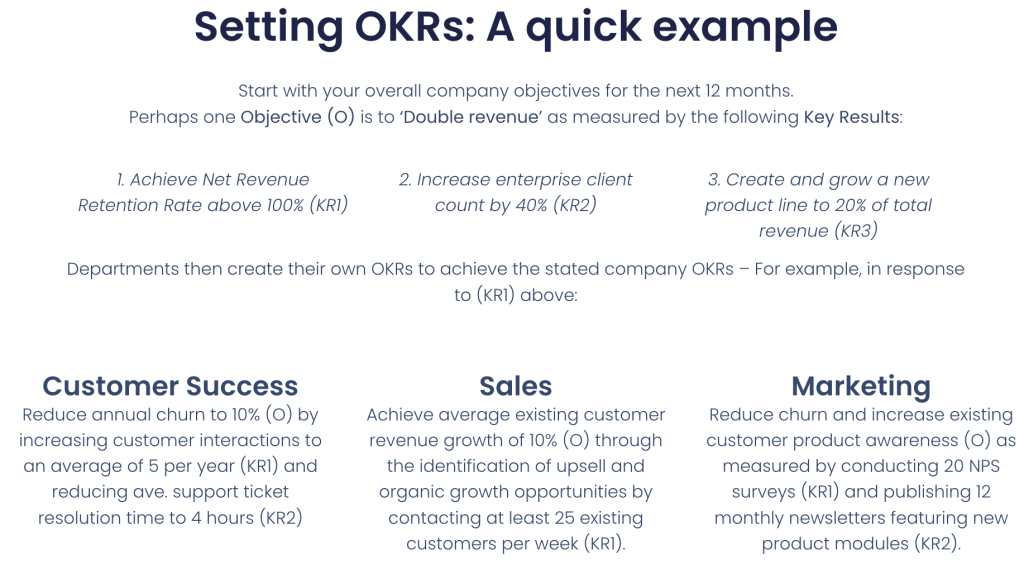A thriving enterprise requires numerous crucial elements, including a fitting model, accomplished team, top-notch product, and a robust growth strategy. It’s crucial to guarantee that the team prioritizes growth-oriented initiatives that align with the company’s overall strategic direction.
However, even with a solid product, strategy, and team, the structure and operations of an organization can pose challenges and inefficiencies that hinder growth prospects. Consider instances where resources are invested in projects that don’t directly impact the company’s growth, are immeasurable in relation to growth, or are low impact and inefficient. This kind of poor prioritization and misalignment is a prevalent issue across organizations, from large government institutions right through to early stage start-ups.
Where to start?
While the concepts of goal setting, prioritization, measurement, and strategic alignment may seem straightforward, implementing them in practice is a different story. This is where OKRs can prove to be valuable as they provide a framework for the entire organization to set measurable goals that contribute to business growth.
It’s crucial to start operating with relentless focus on efficient growth. One approach to achieve this is through implementing Objectives and Key Results (OKRs). This enhances the organization’s focus on growth-driven initiatives, reducing distraction, inefficiencies and misalignment.
What are OKRs?
We cover the long version including the history of OKRs here. The short version is:

The key message here is that a truly concerted effort from Customer Success, Sales and Marketing departments is required to achieve the companywide key result of “Achieve Net Revenue Retention Rate above 100%” (KR1) and in turn the companywide objective to “Double revenue”.
How many Key Results for each Objective?
The ideal number of Key Results per Objective varies, but it’s generally recommended to have 2-5 Key Results per Objective.
How many Objectives?
It’s best to have just 3-5 Objectives at the companywide level of the business. Whilst the size and complexity of the organization might occasionally warrant more, in most cases more Objectives just reflects a lack of clarity at the top of the organisation. Every business has finite resources (time, money, expertise) and should focus on the 3-5 objectives that are most important.
What does it mean for OKRs to cascade throughout the organisation?
Remember that, after completing the OKR setting, there are objectives at all levels of the organisation. Those objectives seek to deliver the key results and ultimately the objectives of the organisation levels/divisions/departments/people directly above.
Imagine being a middle manager where you have objectives and key results above you to achieve via the successful attainment of the objectives and key results you set for yourself to which the people below you will work towards. If you set the wrong OKRs at your level, the people/departments downstream from you will focus on the wrong activities and the companywide objectives slip out of reach.
How Google uses OKRs to create alignment across 150,000 employees
Google, now operating under Alphabet, has leveraged the power of Objectives and Key Results (OKRs) to drive growth and align its operations with its priorities. The company was early in recognizing the potential of OKRs to reduce wasted efforts and create a culture of focus and efficiency. The result was a palpable culture of ambition, transparency, direction, and focus at Google.
The company attributes this culture not only to its smart hiring practices but also to its ability to direct a large number of employees in different roles and levels around common organizational goals. This focus has led to more output and growth compared to its competitors.
Today, Google uses OKRs to manage over 150,000 full-time employees and generate over $250 billion in annual revenue (2021). The success of the company, which only started in 1998, speaks to the effectiveness of OKRs in driving organizational growth.
